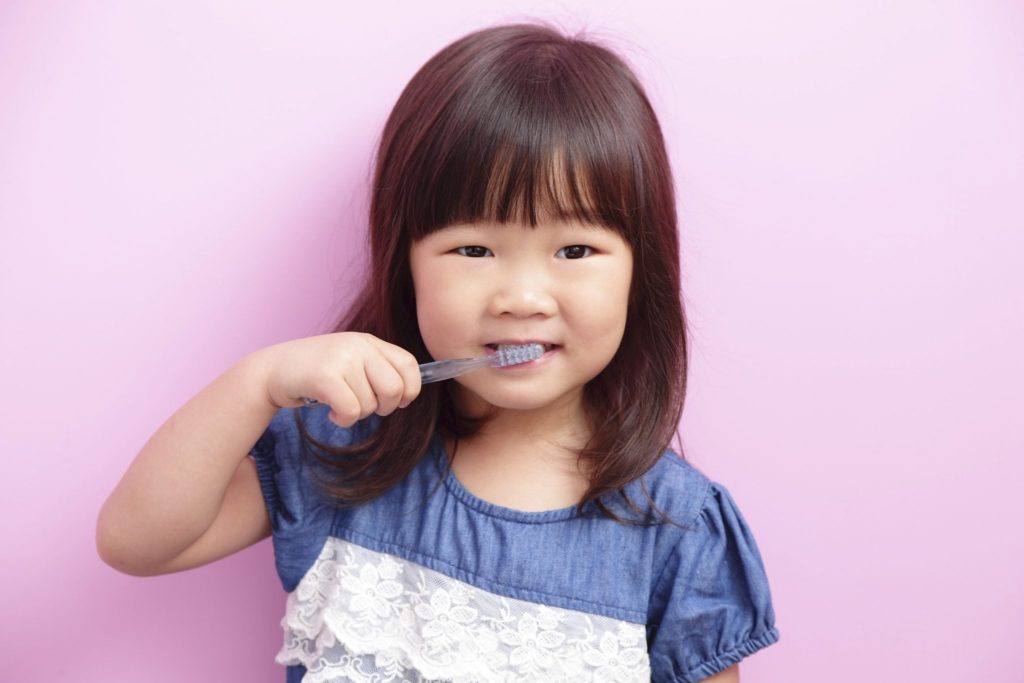Let’s Talk Toothpaste


It has never been a secret that good oral health is important. Brushing your teeth can prevent plaque, gingivitis, and can even help even out your blood sugar– which has a direct effect on diabetes (especially overnight, when food may sit if teeth go un-brushed, feeding sugar right into your blood stream.) Despite all of the health benefits of brushing, many of us don’t know what is really in our toothpaste.
Before we dive into the details, I want to emphasize that brushing your teeth (and your family’s teeth) twice a day is important and shouldn’t be skipped.
While brushing your teeth with regular toothpaste, like Colgate or Crest for example, is far better than not brushing at all, there are a few alarming ingredients in many toothpastes that seem to be normal across the board. For example, there are added sweeteners to many toothpastes. Look for ingredients like sorbitol or sodium saccharin, which are often used to sweeten the flavor of the toothpaste but have no benefits for the mouth. Instead, look for xylitol, which is not only safe but is beneficial.
Another ingredient that many people see and think is safe is fluoride. In small doses, fluoride has benefits for the mouth, however when you combine it with the high levels already added into our water supply, it can do more harm than good. In fact, sodium fluoride is so dangerous that ingesting more than a pea size amount should be called into poison control! This is why the toothpaste containers say to call poison control if ingested– yet this is something that we put right into our children’s mouths. On the less dangerous end of the spectrum, it can cause acne outbreaks.
A few other ingredients to watch out for include: triclosan (which effects heart function), glycerin (which blocks the healthy benefits of natural saliva), titanium dioxide (which is a known carcinogen), and surfactants (which give the toothpaste a large lather but can also cause and exasperate canker sores).
To avoid all of the chemicals, you can either make your own toothpaste or try some of these healthier brands.
To make your own toothpaste, coconut oil, sea salt, Neem, and baking soda are great ingredients to help not only clean the teeth but to prevent plaque. You can find a full recipe for homemade toothpaste here.
For an easier alternative, I recommend these three toothpastes:
- Jack N’ Jill Toothpaste — This organic toothpaste is made with the safest ingredients possible. Jack N’ Jill is absolutely free of anything GMO and free of Palm Oil derivatives. Ingredients include: Xylitol, Purified Water, Vegetable Glycerin (from coconut), Silica, Certified Organic Natural Flavor* (Blueberry, Blackcurrant, Strawberry, Raspberry, Banana), Xanthan Gum, Certified Organic Calendula Officinalis Extract**, Potassium Sorbate (Naturally Derived), Citric Acid. It contains no fluoride or artificial ingredients or sweeteners and is even gluten free. $7
- Weleda Children’s Tooth Gel — Natural protection for children’s baby teeth and is fluoride-free. It gently cleanses with natural silica and biodynamic calendula soothes teeth and gums. It has a kid-friendly flavor with real spearmint and organic fennel. $7
- Burt’s Bees Toothpaste— Tastes great and is all natural. You can get it in many stores as well as online and it has natural kid-friendly flavors.
I also recommend checking out this DIY Guide to Natural Bathroom Products, which can put you in control of exactly what is going into your child’s mouth and what you are putting on their skin. This guide will also help you understand the toxins and problems in common store-bought items that you may not have considered.
Remember: your child’s oral health is important, so you should always consult a dentist if you have any concerns.
To read more about keeping your family’s oral hygiene on track, click here.
To learn about routines for your family, click here.